1938 Fordson Standard N rescued from a wood
Posted by Chris Graham on 16th October 2023
Chris Graham meets Paul Holmes to discover more about the special but abandoned 1938 Fordson Standard N that he rescued from a wood.

Paul Holmes’ 1938 Fordson Standard N, which belonged to his father. It was was recently rescued and returned to working order just in time to complete a very important job.
Sentimentality is a typically strong driver among plenty of tractor enthusiasts, with many owners choosing the models they keep based on evocative links from the past. But in Paul Holmes’ case, the affinity he has with the Fordson Standard N featured here is very strong because the tractor was owned by his late father.
“While going through my father’s effects following his death,” Paul told me, “I came across an old photograph of him leaning against the bonnet of the Fordson, and it was that image that triggered the snap decision that’s brought us to where we are now. Tractors had played an important part in Dad’s life, and he spent much of his early working days on the South Downs above Steyning, in West Sussex, using a Fordson Standard N like this one.”
Keeping warm
“I remember him telling lots of stories about his life in the fields at that time and one, in particular, stuck with me. He recalled that during the winter months, one trick he used in the battle against the cold was to set the tractor at the start of a ploughing run, jump off and then walk along side it warming himself using the heat from the exhaust manifold and engine!
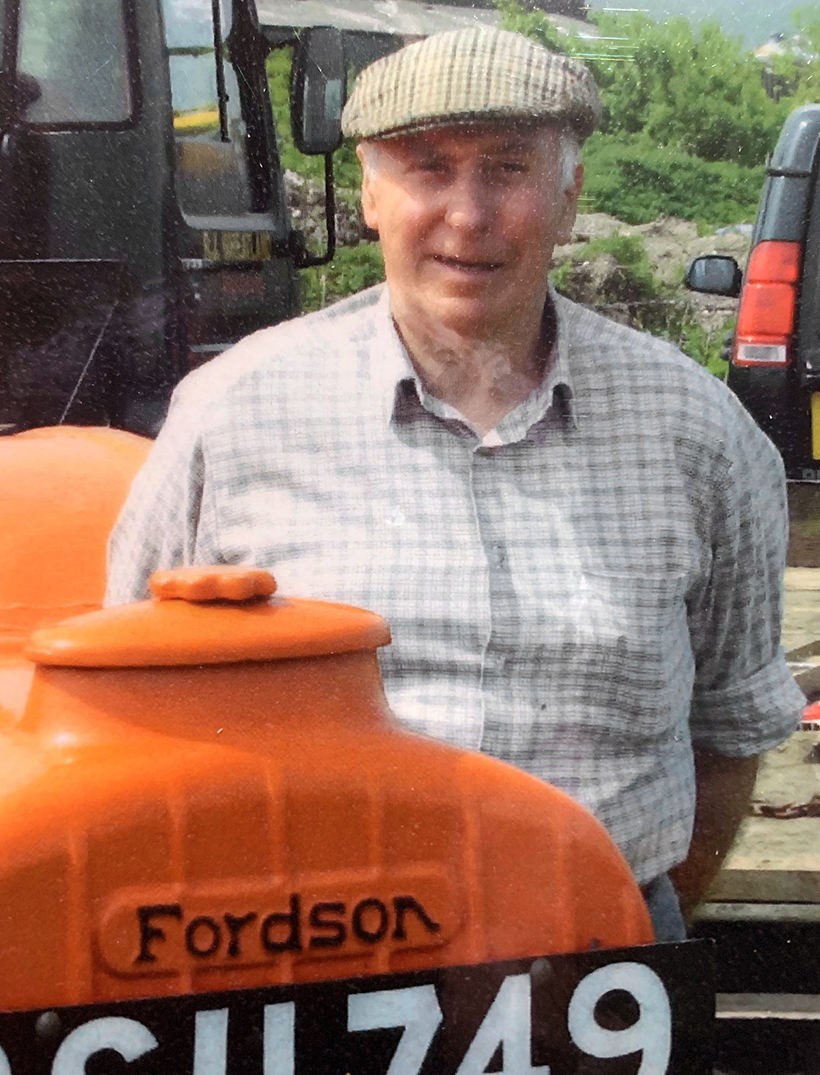
Paul’s father, Tony, photographed with the Model N in 2005, when he was using it as his match ploughing tractor.
“In later life, he decided to buy a Fordson Standard for sentimental reasons, and to use it for competition ploughing. He found this orange, 1938 petrol/TVO Model N for sale somewhere in Essex, which seemed to fit the bill. It was a complete and essentially original runner, so met his needs well. I imagine that the previous owner had repainted it and carried out some sympathetic restoration work and, thanks to that, Dad was able to start using it immediately. However, it wasn’t all plain sailing, and starting issues afflicted that N, as they seem to do with so many others.
“Things came to a head one day about 10 years ago when Dad, on the point of leaving for a ploughing match, found that the tractor wouldn’t start. That, evidently, was the last straw; he simply covered it, walked away and never touched it again. It sat in his field for the following decade, slowly being engulfed by encroaching woodland until, having discovered that photograph after his death, I had the idea of getting the machine running again and using it at his funeral.”
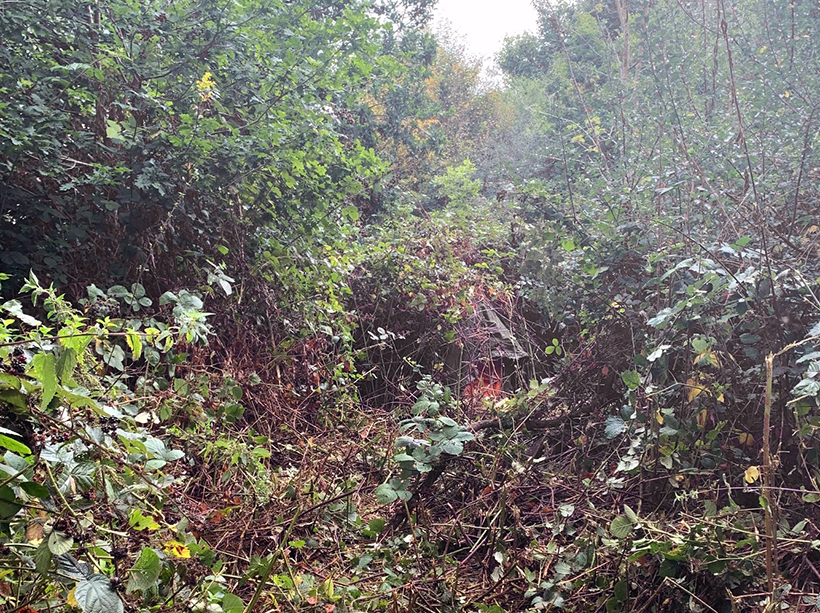
The eagle-eyed among you might be able to spot the splash of orange paint in the centre of this image. The Fordson was well and truly buried in the undergrowth after standing outside for a decade. Thankfully it had been sheeted.
Of course, Paul’s first job was to find the tractor. He knew the field well as he’d helped with hay-making there when he was much younger, but everything had changed so much since those days. “I returned to the field in rural Cripps Corner, East Sussex, and, with the help of my friend, John Parnaby, we began our search. The site had become terribly overgrown, but we’d come prepared with brush-cutters, and began chopping back the undergrowth towards where I thought the tractor had been parked. It took some time before I spotted the first flash of tell-tale, orange paint, and then a good while longer until we’d cleared the area immediately around the machine.”
Unknown quantity
At that point the clock was already ticking as there was only three or four weeks before the funeral, and the tractor’s condition remained completely unknown. “Once we’d removed the plastic sheet that still covered it, I was pleased to see that the tractor appeared to be complete, although it did have three flat tyres and the engine seemed to be seized.
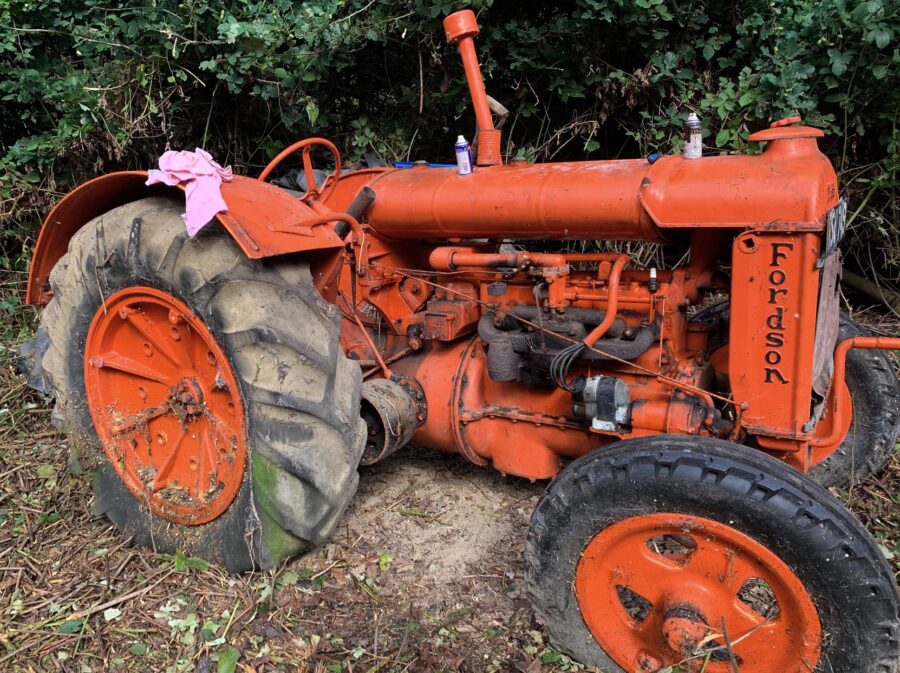
With the undergrowth all cleared away, this was the tractor’s ‘as found’ condition.
“A few days later, when we next returned to the site, John bought his son, James, and, together we began a more detailed assessment. We quickly established that there was hope for the engine as, after giving the starting handle a decent kick, I could detect some movement. Encouraged by that we removed the spark plugs and poured some oil down into the cylinder bores. Then, after some more mechanical persuasion, it became possible to turn the engine quite easily.
“But it was clear that there wasn’t much compression, so we needed to dig a bit deeper. However, as the tractor remained immovable, all that work had to be carried out in situ. We removed the manifold and the side plate, after which we spotted that two of the valves were stuck open on two separate cylinders. Despite our best efforts, neither could be shifted as the stems were well and truly rusted into place, so the next job was to remove the cylinder head.” By this stage, Paul was thinking inwardly that the project was turning into a disaster, and that getting to the church on time seemed like a very remote possibility.
Increasingly involved
“I’d fondly imagined that it would be relatively straightforward to get the tractor running in time for the funeral, but this was looking less and less likely as we were being forced to delve ever deeper into the old Fordson’s engine.
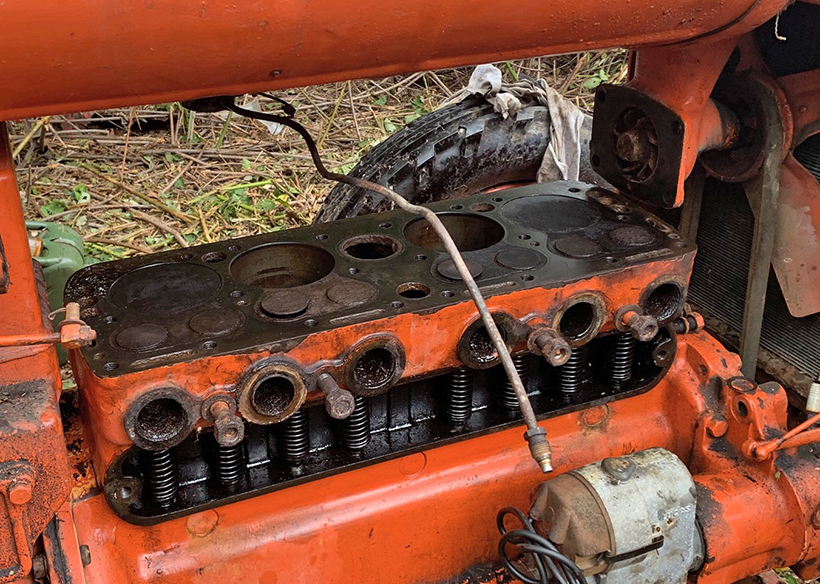
The engine with the cylinder head removed, as Paul and his helpers struggled to free a couple of valves that were stuck open. All this work had to be tackled in situ, as the tractor couldn’t be moved at that stage.
“Eventually, we managed to free-off the stuck valves by working tenaciously at their corroded stems, and they were slowly worked backwards and forwards until they moved freely. We were then able to replace the head, re-using the original copper gasket, which was in decent condition. Next we fitted a spare magneto that John had bought with him ‘just in case’ and, to our amazement, the engine burst into life at the first attempt! At that stage, though, due to blocked pipes, it wasn’t possible to get any fuel flowing from the main TVO tank, so we could only run the engine on petrol.”
With the engine running and the tractor movable, the next problem that faced the trio was how to get it onto the trailer. “We managed to drive it out of the woods,” Paul explained, “but it wasn’t possible to steer it with the sort of precision needed to get it up the ramps and onto John’s trailer. We’d already tried inflating the tyres, but the fronts didn’t hold any air, and the tube in the flat rear exploded!
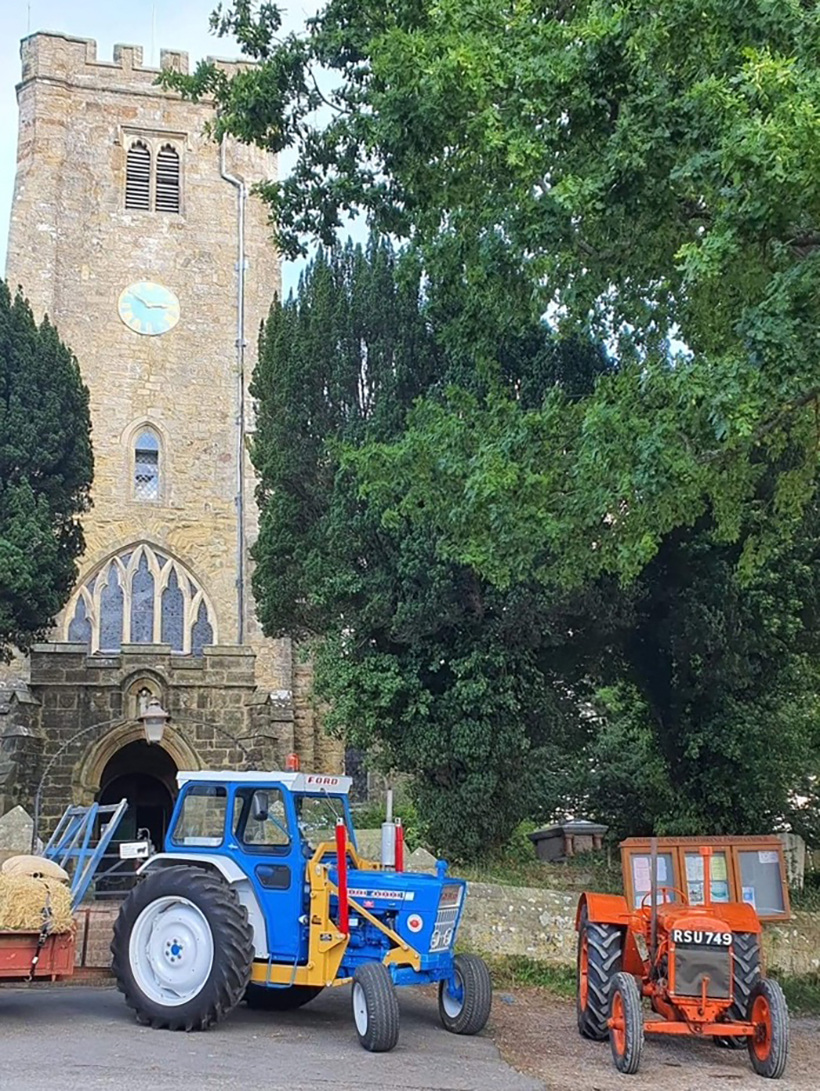
The Fordson and Paul’s recently restored Ford 4000 in silent vigil outside St Mary’s, near Robertsbridge, on the day of the funeral.
“In the end we had to use a JCB and strops to help manoeuvre it on. With the N only weighing about one-and-a-half tonnes, the JCB had no trouble, especially as it was working on one end at a time. Then, once the tractor was back at John’s workshop, we got a new pair of rear tyres plus new inner tubes for the fronts. I then fitted a new seal to the manifold and did some work on the evaporator, which had been leaking a bit of fuel.”
Originality matters
Paul was keen to keep the tractor as close to ‘original’ as he could, so nothing was replaced that wasn’t absolutely necessary. “I thought it was important to retain the magneto,” he added, “rather than opting for a more modern alternative, so this was sent away to Steve Pike to be refurbished, which included the fitting of a new armature. The coolant system was thoroughly flushed and – almost inevitably – the water pump was found to be leaking, but I cured that.”

Engine running issues led to a delayed start for Paul when he attended the recent, SEVAC-organised working weekend; the tractor’s first official outing with a plough.
That completed the rudimentary work needed to get the Model N up and running, and ready for its funeral duties which, I’m happy to report, it performed faultlessly. “John kindly trailered it to and from the church at Salehurst,” Paul said, “and I was delighted to drive it on the day without a hitch.
“I’m very happy with both the condition and the look of the tractor now, and think that it’s tidy enough, bearing in mind its age and history; I certainly don’t have any plans to bring it back to ‘as new’ condition as its history is very important to me.

Paul says that he’s probably only ever ploughed two fields in his life, so is relishing the challenge of becoming a competition ploughman.
“For the future, my plan is to use it for competition ploughing, as my dad did. I also rescued the old, two-furrow Ransomes plough that he used to use, although that remains unrestored and is a project for the future. I’ve done very little ploughing in my time, so it’s going to be an interesting education for me. When I was selling farm machinery back in the day, I sold a lot of ploughs and became good at doing the basic set-up for customers. But that’s not the same as the fine-tuning that’s required for effective match ploughing, so I’m happy to admit that I have a lot to learn.
“My first real outing with the tractor – with my bother-in-law, Ashley, and his plough – was at a SEVAC-organised working weekend and ploughing match in Sharpthorne, West Sussex. It was a pretty relaxed affair, although there was a competitive element as entrants worked properly marked-out plots and were assessed by a pair of judges. Things got off to a slow start, though. The N refused to run without stalling, and I could feel my dad looking down with a wry smile on his face as a group of us struggled to get it going! Thankfully, we eventually managed it.”
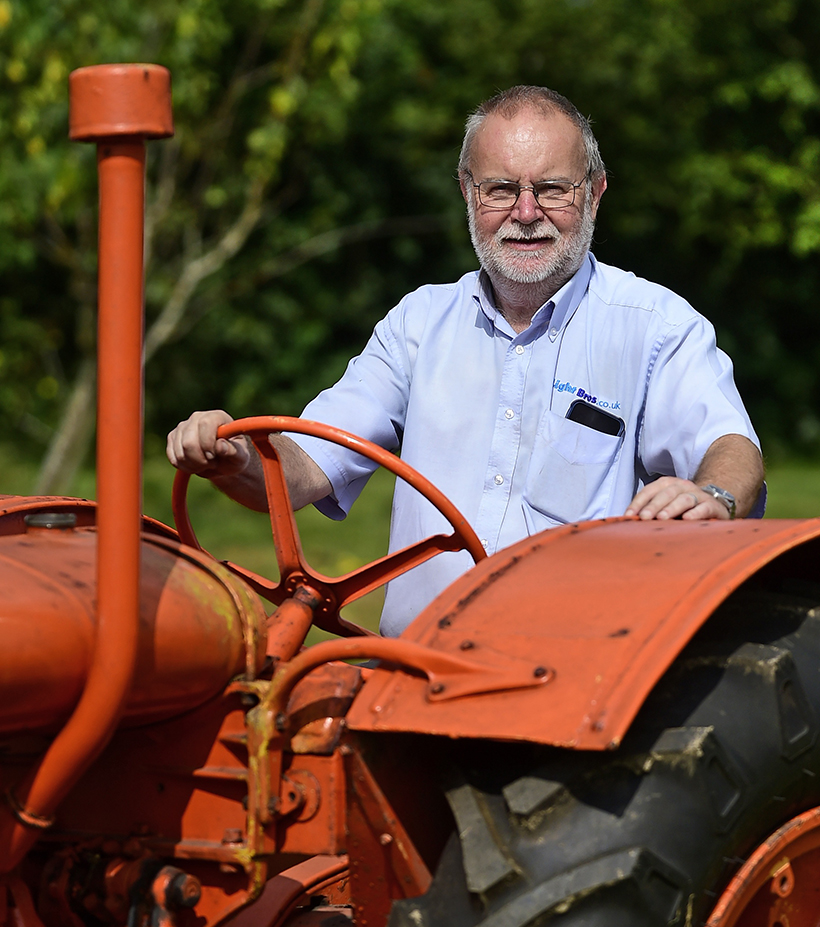
Paul aboard the ‘up and running’ Fordson. The yellowish paint discolouration has been caused by spilt petrol.
Having inherited this Fordson Standard N and wrestled it from Mother Nature’s grasp, it’s clear that Paul is now determined to enjoy the time he spends with it. The fact that he’ll be emulating his dad’s endeavours, and eventually using the very same plough, is a wonderful added bonus which, I’m sure, will provide him with plenty of inner comfort. However, whether or not he decides to re-enact his dad’s bold and unconventional method for keeping warm while ploughing this winter, remains to be seen!
This feature comes from the latest issue of Ford & Fordson Tractors, and you can get a money-saving subscription to this magazine simply by clicking HERE

Previous Post
This 1904 Coventry Humberette is a London to Brighton Run favourite
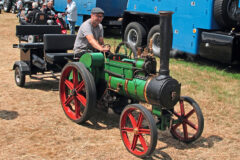
Next Post
The brilliant Chickerell Steam & Vintage Show



